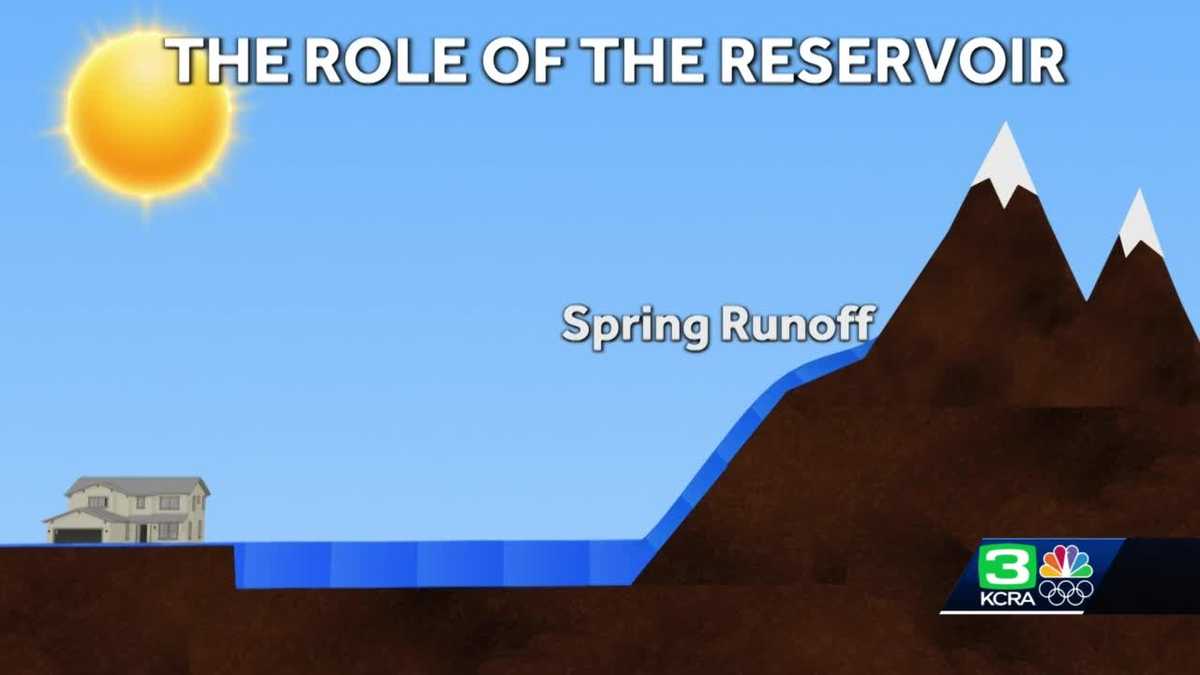
California's water supply can vary greatly from year to year to the need to manage what we get is a high priority in the Golden State. The Central Valley Project was devised in 1933 as a way to manage water and transport it areas considered more water-rich to the more water-scarce areas in the Central Valley by a series of canals, aqueducts and pump plants. Reservoirs play an important role in the project, feeding the canals that transport water from the far southern end of the valley. The crown jewel of the system is Shasta Lake with a capacity of more than 4.5 million acre-feet of water. It’s the biggest reservoir in California To get a sense of the size, consider that Folsom Lake has a capacity of fewer than 1 million acre-feet. Both reservoirs provide water for recreation, power generation, wildlife habitat, agriculture as well as residential and industrial uses. Here's a closer look at the role of reservoirs in Northern California. During a typical year, the wet season lasts from November to April with the bulk of precipitation coming during the winter months. That’s good because it means the Sierra Nevada mountains can stockpile the snow for later use. Before dams were built that snow would melt in the spring, filling rivers and causing annual flooding in low-lying areas. But California also has a long dry season which can quickly dry up that water from the spring run-off. There are also those years when California receives an abundance of snow during the winter, along with heavy rain in the spring which results in serious valley flooding.But again, summers are long and dry and that heavy spring run-off becomes parched ground by summer's end. The Folsom Dam was built in 1955. Now when there are years of abundant snow and rain the run-off can be caught by the dam, filling Folsom Lake instead of the floodplain. That reduces the chances for serious flooding and stores water for use during the long, dry summer. The system can also help to relieve the water needs if we have a meager wet season with little snowpack. But if we have two consecutive years with little snow the reservoirs run low and are of little help. Unfortunately, that's where we find ourselves right now. This story was produced as part of KCRA 3's "Running Dry" series. Stay tuned for more stories about California's drought conditions all week.
California's water supply can vary greatly from year to year to the need to manage what we get is a high priority in the Golden State.
The Central Valley Project was devised in 1933 as a way to manage water and transport it areas considered more water-rich to the more water-scarce areas in the Central Valley by a series of canals, aqueducts and pump plants.
Advertisement
Reservoirs play an important role in the project, feeding the canals that transport water from the far southern end of the valley.
The crown jewel of the system is Shasta Lake with a capacity of more than 4.5 million acre-feet of water. It’s the biggest reservoir in California
To get a sense of the size, consider that Folsom Lake has a capacity of fewer than 1 million acre-feet.
Both reservoirs provide water for recreation, power generation, wildlife habitat, agriculture as well as residential and industrial uses.
Here's a closer look at the role of reservoirs in Northern California.
During a typical year, the wet season lasts from November to April with the bulk of precipitation coming during the winter months. That’s good because it means the Sierra Nevada mountains can stockpile the snow for later use.
Before dams were built that snow would melt in the spring, filling rivers and causing annual flooding in low-lying areas.
But California also has a long dry season which can quickly dry up that water from the spring run-off.
There are also those years when California receives an abundance of snow during the winter, along with heavy rain in the spring which results in serious valley flooding.
But again, summers are long and dry and that heavy spring run-off becomes parched ground by summer's end.
The Folsom Dam was built in 1955. Now when there are years of abundant snow and rain the run-off can be caught by the dam, filling Folsom Lake instead of the floodplain. That reduces the chances for serious flooding and stores water for use during the long, dry summer.
The system can also help to relieve the water needs if we have a meager wet season with little snowpack. But if we have two consecutive years with little snow the reservoirs run low and are of little help.
Unfortunately, that's where we find ourselves right now.
This story was produced as part of KCRA 3's "Running Dry" series. Stay tuned for more stories about California's drought conditions all week.
May 12, 2021 at 09:33AM
https://www.kcra.com/article/running-dry-reservoirs-california-lake-shasta-folsom-lake-drought-explainer/36401652
Running Dry: Explaining reservoirs' importance in California - KCRA Sacramento
https://news.google.com/search?q=dry&hl=en-US&gl=US&ceid=US:en

No comments:
Post a Comment